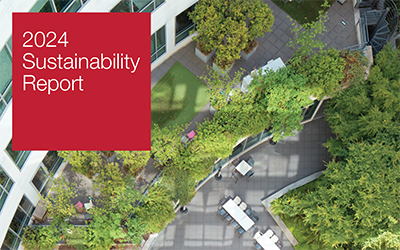Our commitment is to create and protect value for or investors, clients, and the broader communities in which we operate. We achieve this by strategically enhancing environmental performance and fostering thriving communities, which are integral to long-term asset resilience and growth.
We leverage sustainability to mitigate risk and seize opportunities to create and protect value. This focus helps us attract and retain capital and clients, whilst having a positive impact on people and the planet.







